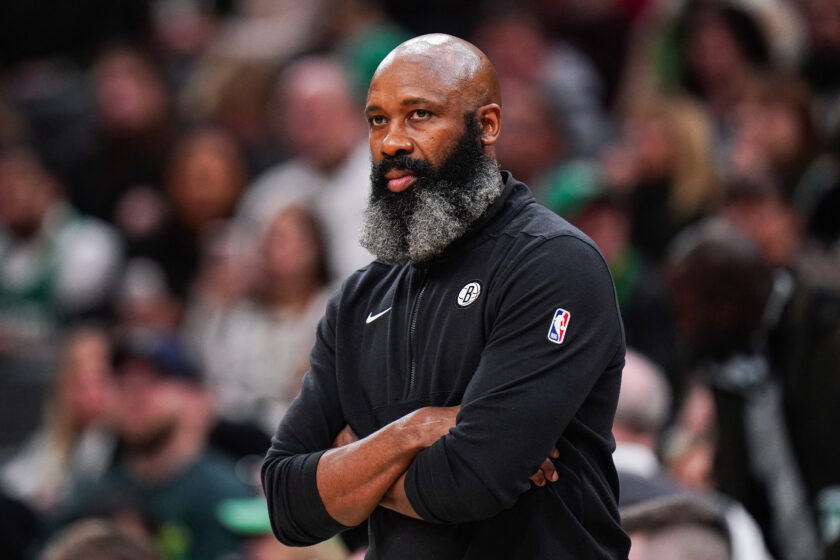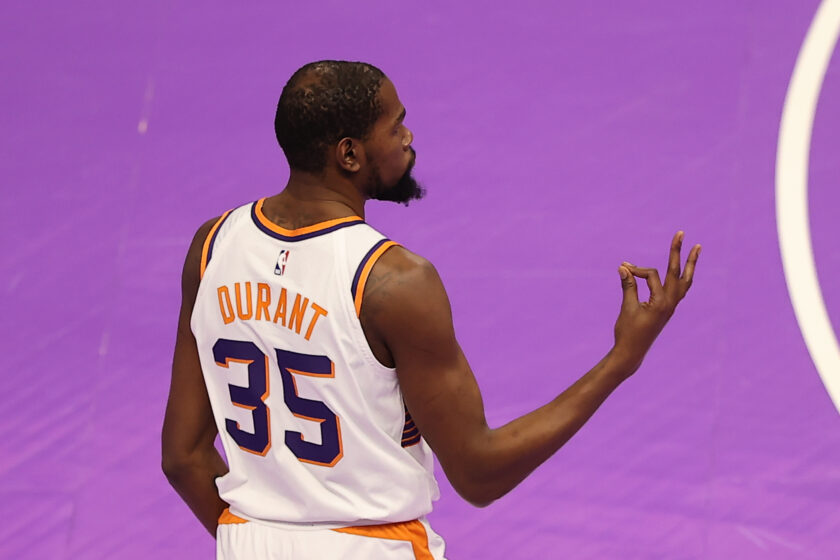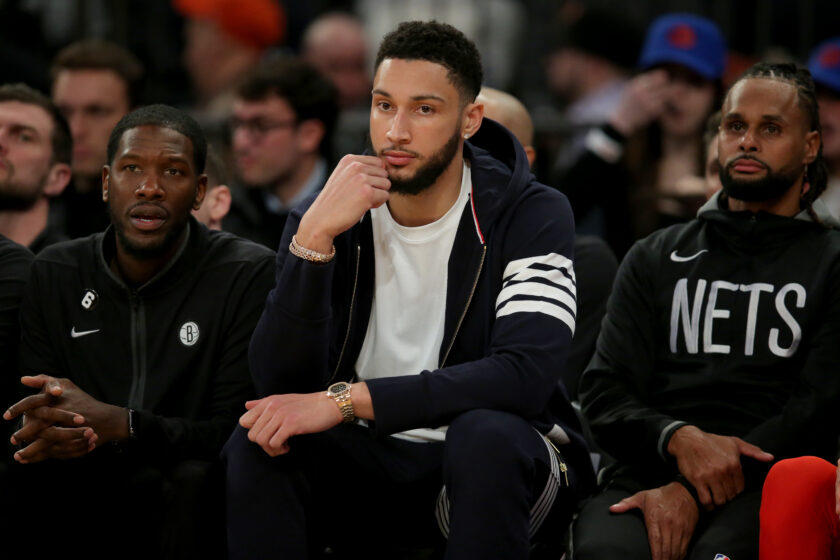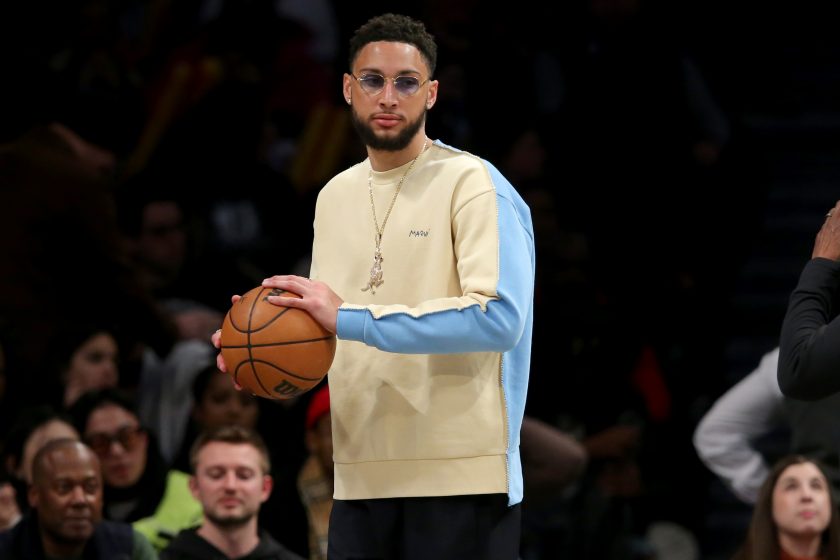The 3 critical call-outs about the Brooklyn Nets 2019-20 schedule
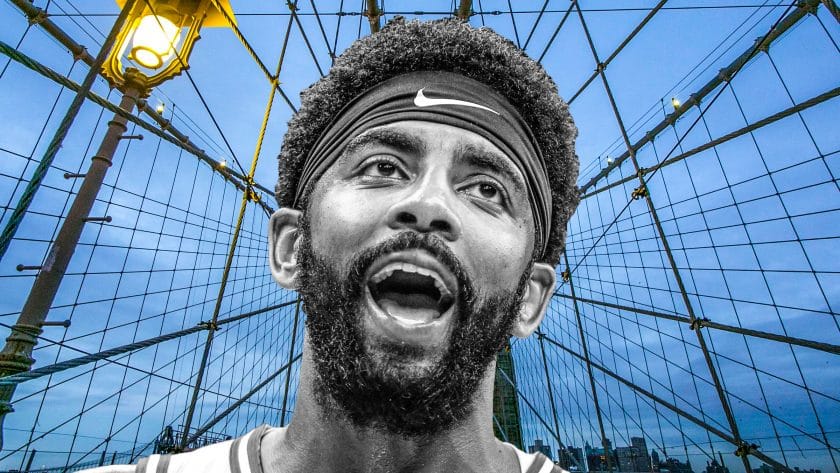
The Brooklyn Nets could be better than expected due to the sheer ease of their schedule. Here are three things to keep an eye out for.
[sc name=”Matt Brooks Banner”]On Monday, the NBA officially released the 2019-2020 schedule for all 30 teams. I’ve already covered Brooklyn’s top-5 must-watch games, but have yet to approach the schedule holistically… until today.
Brooklyn’s schedule is pretty damn easy.
According to NBAthlete’s Jared Dubin, the Brooklyn Nets are projected to encounter the fifth-easiest schedule in the league. Dubin’s model ranked all 30 teams by their strength of schedule according to Las Vegas’ win odds for the 2019-2020 season.
Strength of Schedule ratings for all 30 teams based on Vegas O/U lines.
Suns and Thunder tied for the hardest schedule with .519 winning percentage. (Equivalent to a 42.56-win team)
Bucks have the easiest with .490 winning percentage. (Equivalent to a 40.18-win team) pic.twitter.com/ErZB7zEDb5
— Yaya Dubin (@JADubin5) August 12, 2019
Now, keep in mind, Dubin’s projection is nothing more than that: a predictive model. But given that none of us are soothsayers, this is about as good as it gets; plus, if you were blessed with clairvoyant powers, you assuredly wouldn’t watch sports… as that would be pretty boring!
NetsDaily‘s Anthony Puccio echoed Dubin’s sentiments regarding Brooklyn’s soft schedule, pointing out that Brooklyn’s longest road trip is just five games. This, obviously, pales in comparison to last season’s painstaking seven-game road crusade that nearly sank Brooklyn’s playoff hopes.
Only two stretches will test Brooklyn’s mettle.
The first is between Jan. 14 and Jan. 23.
- Jan. 14 vs. Utah Jazz
- Jan. 15 @ Philadelphia 76ers
- Jan. 18 vs. Milwaukee Bucks
- Jan. 20 vs. Philadelphia 76ers
- Jan. 23 vs. Los Angeles Lakers
The positives? Four of the five games are at home. Unfortunately, the homecourt advantage might not matter. Brooklyn is starring down a gauntlet of teams fighting for top-two finishes in their respective conferences.
I’ve already expressed my opinion on how the Brooklyn Nets might fare against two of these teams. Milwaukee is, erm, not a favorable matchup; Philadelphia I feel much more confident about. However, it’s worth noting that one of the two Philadelphia contests comes on the back-end of a brutal back-to-back. Yikes. Not good.
The kickstarter to that back-to-back isn’t much easier. Utah had Brooklyn’s number last year, besting the Nets by a combined 26 points during their two faceoffs. Brooklyn’s drive-happy guards failed to find an inch of space against the terrorizing Frenchman in the middle, Rudy Gobert, who sent Net shots flying like owls on a busy Hogwarts mail day.
Utah managed to improve their offense without severely damaging their top-2 defense this summer. The drop-off from Ricky Rubio to Mike Conley on defense is slim-to-none; the boost on offense is borderline limitless. Adding Bojan Bogdanovic to the core gives Utah dependable marksmanship as well as some excess playmaking deep in games. Trading for the greatest player in NBA history to not make an All-Star team should have stripped the Jazz butt-naked of its depth. Instead, Utah improved and is a stealth one-seed in the West.
What does all of this mean for Brooklyn? Nothing good, I assure you! The Jazz are the deepest team in the league; Brooklyn, underrated in the depth department, is still questionable further down its rotation. That, my friends, is a problem during the dauntingly long regular season when deep benches matter.
[sc name=”Nets Center”]The Lakers are the strangest yet most interesting team in the league. To some, the additions of Avery Bradley, Quinn Cook, Jared Dudley, Troy Daniels, Danny Green and DeMarcus Cousins insulate the playmaking chops of LeBron James with the required amount of shooting. To others, these signings — outside of Danny Green and maybe a healthy Boogie — put forth a group of eighth, ninth and 10th men on a team that’s short on fifth, sixth and seventh options.
Call this fence-sitting but my opinion on the 2019-2020 Los Angeles Lakers falls somewhere between these brash evaluations. One thing is for certain: the combination of Anthony Davis and LeBron James is a freakishly athletic and physically imposing duo for any team.
The Nets don’t have anyone to deal with the sheer experience and remaining explosiveness of LBJ. They are definitely without a counter for point-center Anthony Davis. Kyrie Irving, Spencer Dinwiddie, and Caris LeVert better be in their bags to knock-off the Lakeshow giants.
Overall, this run of games screams 1-4.
Brooklyn’s second taxing stretch might be even more arduous. Between March 10 and March 15, the Nets take a lovely tour of the Pacific division during a four-game road trip up and down the California coast. See for yourself.
- March 10 @ Los Angeles Lakers
- March 12 @ Golden State Warriors
- March 13 @ LA Clippers
- March 15 @ Sacramento Kings
Look, I understand that constructing the schedule is vastly tedious work and I don’t envy those in charge. But man, you’re telling me the scheduling gods couldn’t flip the Warriors and Clippers games? Traveling from Los Angeles to San Francisco and then back again to LA is three extra hours of unnecessary flying.
Whatever. Even if the pair of games was to be switched, this run still wouldn’t be anything to sneeze at.
Golden State might be the biggest unknown of the 2019-2020 season. To some, they’re a fringe playoff team. I’m in the camp of “Stephen Curry frightens me and I wouldn’t want to face him during his potential revenge tour.” His stats versus the 2018-2019 Nets were formidable, to say the least: 35 points, seven rebounds, three assists, and 46.7% from deep on 15 attempts per game.
His new running mate, D’Angelo Russell, will surely have something to prove. He isn’t exactly known for coming up short against his former employers.
D'Angelo Russell gets his revenge on the Lakers. Hits dagger 3….. pic.twitter.com/2Pz2hQFCTW
— Gifdsports (@gifdsports) December 19, 2018
Facing the LA Clippers the very next night is downright cruel. The stranglehold of Kawhi Leonard, Paul George, Patrick Beverley, Mo Harkless, Rodney McGruder and JaMychal Green is pure nightmare fuel for an offensive-minded team like the Nets.
Somehow, the Sacramento Kings — once the talk of the league alongside Brooklyn last season — are the afterthought in this foursome.
Do you know what terrifies me? De’Aaron Fox, the fastest player in this league, and some Team USA seasoning. Certain players (see: 2010 Kevin Durant) really benefit from playing alongside our country’s best. In general, those players have an insatiable competitive edge and are blessed with undeniable gifts for their position. Don’t sleep on De’Aaron Fox and the Sactown Kings.
Since y’all love predictions, here’s mine: Brooklyn finishes 2-2 with wins over Sacramento and the Dubs.
Even Brooklyn’s back-to-backs are kind of easy.
During the 2019-2020 season, the Brooklyn Nets will be forced to undergo 11 total back-to-backs. As mentioned by Forbes Sports‘ Shlomo Sprung, Brooklyn is tied for the fewest back-to-backs next season. Here’s the full back-to-back schedule:
- Nov. 1 vs. Houston, Nov. 2 @ Detroit
- Nov. 24 @ New York, Nov. 25 @ Cleveland
- Dec. 14 @ Toronto, Dec. 15 vs. Philadelphia
- Jan. 6 @ Orlando, Jan. 7 vs. Oklahoma City
- Jan. 14 vs. Utah, Jan. 15 @ Philadelphia
- Jan. 25 @ Detroit, Jan. 26 @ New York
- Jan. 31 vs. Chicago, Feb. 1 @ Washington
- Feb. 28 @ Atlanta, Feb. 29 @ Miami
- Mar. 3 @ Boston, March 4 vs. Memphis
- Mar. 12 @ Golden State, March 13 @ LA Clippers
- Mar. 27 @ Orlando, March 28 vs. Cleveland
A couple of things stand out. Brooklyn’s back-to-backs are fairly clustered. During the month of January, Brooklyn eats up four of its 11 total back-to-back schedulings. Luckily for the Nets, only three of those eight total January teams advanced to the postseason last year: Utah, Philadelphia and Detroit. So it could be worse.
The second back-to-back cluster is more vigorous. From Feb. 28 to March 13, Brooklyn runs head-first into three back-to-backs. Unfortunately, this time around, four of the six total teams will probably be pretty damn good: the Boston Celtics, the Jimmy Butler-led Miami Heat, Golden State and the LA Clippers.
Alas, the good news.
During the first two-and-a-half months of the NBA season, there are only three total back-to-backs on Brooklyn’s schedule. This certainly provides a backbone to the idea that Brooklyn could be in for a hot start.
Even better, there are no back-to-backs during the closing April month — a huge benefit for a Brooklyn team that will likely be vying for a mid-to-upper-tier playoff spot.
Let’s go even further and sort these back-to-backs according to their level of difficulty. I came up with three categories: back-to-backs with two good teams, back-to-backs with one good team, and back-to-backs with two “stinkers.”
Back-to-backs with two good teams: Houston-Detroit, Toronto-Philadelphia, Utah-Philadelphia, Golden State-LA Clippers.
We’ve already discussed two of the four tough back-to-backs. Let’s get into the other two.
Houston is, obviously, a team to be reckoned with next season. Detroit, on the other hand, is not. But playing Blake Griffin, Derrick Rose, Reggie Jackson and a bunch of other injury-prone players at the beginning of the season means a prime, rested 2019-2020 Detroit Pistons. Plus, because of the Rockets’ tireless backcourt, Brooklyn’s fragile load management candidates — Caris LeVert and Kyrie Irving — could sit out the Detroit game to avoid severe injuries.
It’s more than likely that Toronto will still be riding the high of their Finals victory by mid-December, making them tough to count out. Playing the Raptors before February’s trade deadline means that all of Toronto’s veteran talents — Serge Ibaka, Kyle Lowry and Marc Gasol — are still 100% on the roster. Even without Kawhi Leonard around, the Raps are more than pretty good. Playing the Sixers the very next night is… again! Really meanspirited, Adam Silver!
Back-to-backs with one good team: Atlanta-Miami, Boston-Memphis.
Boston could result in an L. At least the Nets get to head home to host the aggressively rebuilding Memphis Grizzlies instead of the other way around.
Brooklyn’s second back-to-back in this made-up category is not as forgiving. Atlanta is an 8th seed hopeful given the bounty of exciting young talent on their roster (Trae Young, John Collins, De’Andre Hunter, and Kevin Huerter). They’re not “good” per se, but the Hawks could surprise opponents on certain nights. Heading to Miami the very next day to play Jimmy Butler’s Heat smells like trouble.
The Heat were a well-balanced, superiorly-coached team last season. They had every single piece in place except for the most important one: a superstar. That all changes with Jimmy G Buckets aboard. Miami is my longshot bet to finish top three in the East next season, and they’re the type of no-nonsense team that decimates an opponent on the wrong end of a back-to-back.
Back-to-backs with two stinkers: New York-Cleveland, Orlando-Oklahoma City, New York-Cleveland, Chicago-Washington, Orlando-Cleveland.
There you have it! Five of the Nets’ 11 total back-to-backs contain two bad teams — the highest of any category!
Now, to be fair, Orlando is a bit of a toss-up on the good/bad team scale. What gives Brooklyn the upper hand is that they never play the Magic on the wrong side of a back-to-back. To me, that’s pretty advantageous for the guys in black-and-white; Brooklyn is flat-out better.
Chicago could be tricky depending upon the growth of Wendell Carter, the stability of Otto Porter, and continued health of Lauri Markkanen and Zach LaVine (*whispers* they’re a possible 7-to-8 seed if all goes right in my opinion). But again, fortunately for these gosh darn Nets, they’ll be fully rested when they host the unpredictable Chicago Bulls on the first night of a back-to-back.
The remaining teams will be outright terrible next season. Like, abhorrently bad. I’m sure Kenny Atkinson and his Brooklyn Nets aren’t complaining, though. Maybe 50 wins isn’t so crazy after all.
[sc name=”Nets Link Next” link=”https://elitesportsny.com/2019/08/13/do-not-miss-these-5-games-on-the-2019-2020-brooklyn-nets-schedule/” text=”Do Not Miss These 5 Games On The 2019-20 Brooklyn Nets Schedule” ]An NBA fanatic who specializes in the advanced analytics of the game. I cover the Brooklyn Nets here in the city. Follow me on Twitter for semi-witty basketball tweets. @MattBrooksNBA

